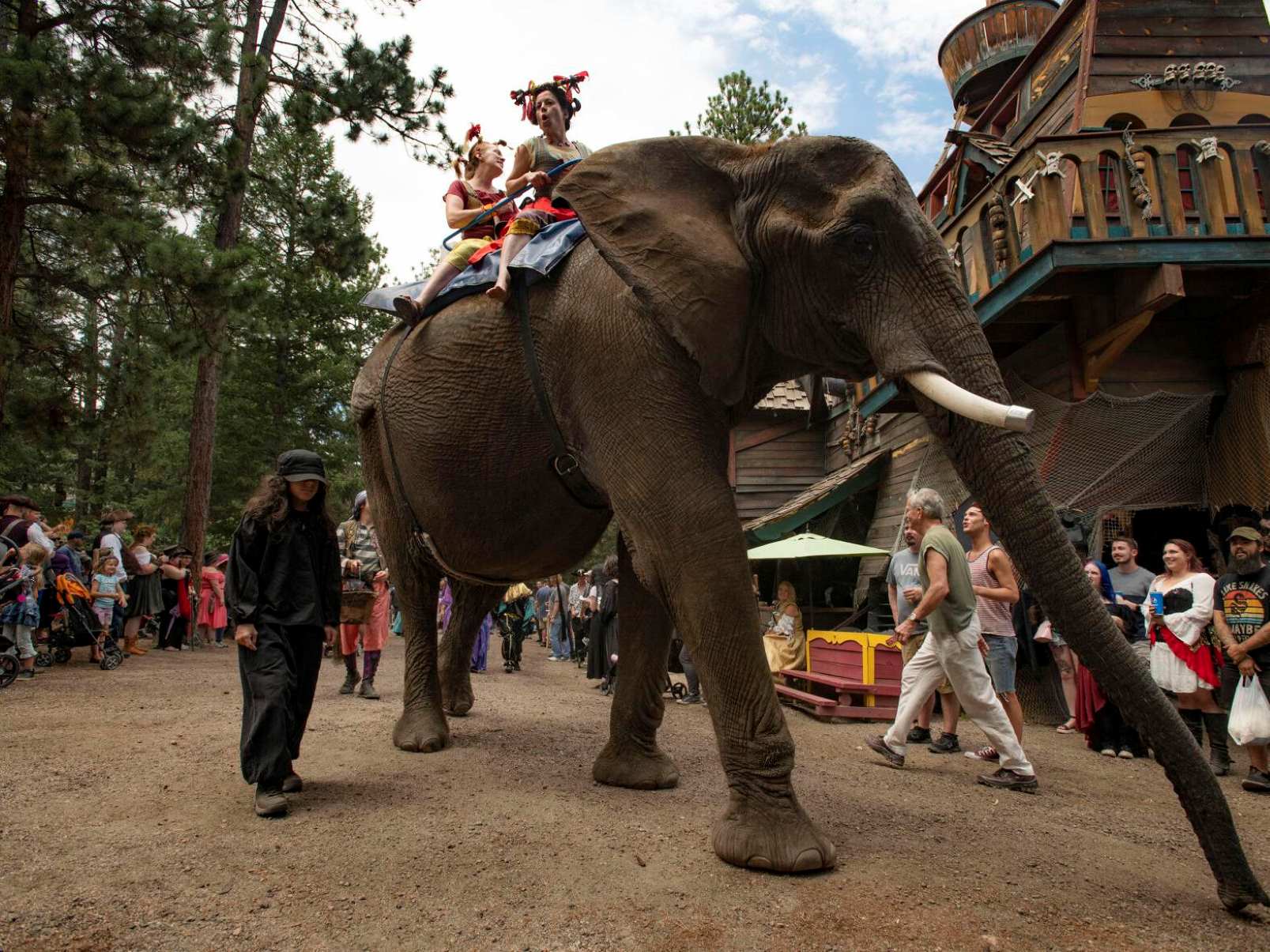
Ever wondered what makes Renaissance festivals so enchanting? These lively events transport visitors back to the 16th century, offering a unique blend of history, entertainment, and community spirit. Originating in the 1960s, Renaissance festivals have grown into popular gatherings that attract thousands of attendees each year. From elaborate costumes and jousting tournaments to traditional crafts and period-specific cuisine, there's something for everyone. Whether you're a history buff, a craft enthusiast, or just looking for a fun day out, Renaissance festivals provide an immersive experience that combines education with entertainment. Ready to dive into the magic of the Renaissance? Let's explore 30 fascinating facts about these captivating festivals.
Origin and Evolution
Renaissance festivals, or faires, have a rich history that dates back to the 1960s. They offer a unique glimpse into the past, blending history with entertainment.
- The first modern Renaissance faire was held in 1963 in Agoura Hills, California, by Phyllis and Ron Patterson. It was inspired by medieval festivals and aimed to create a sense of community and nostalgia for a simpler time.
- The term "Renaissance" refers to the cultural revival of the 14th to 17th centuries in Europe. However, these festivals often have more medieval elements than Renaissance ones.
- Renaissance festivals have grown in popularity over the years, with some events attracting tens of thousands of visitors annually. The largest in the U.S. is the Michigan Renaissance Festival, drawing over 1 million visitors each year.
Costumes and Dress Code
One of the most exciting aspects of Renaissance festivals is the elaborate costumes. Dressing up helps attendees feel like they've stepped back in time.
- Participants are encouraged to wear period attire, ranging from simple tunics and leggings to elaborate court dresses and suits.
- Many attendees enjoy creating their own costumes, while others rent or purchase them at the festival.
- To enhance the immersive experience, festivals often provide a language guide with phrases from the 16th century, like "Hail and well met!" and "Grammercy!"
Activities and Entertainment
Renaissance festivals are packed with activities and entertainment that transport visitors to another era.
- Jousting tournaments are a staple, featuring knights on horseback charging at each other with lances.
- Sword fights, acrobatic performances, and live music are common attractions.
- Visitors can enjoy traditional crafts like blacksmithing, woodworking, and weaving.
Food and Drink
The culinary offerings at Renaissance festivals are a highlight for many attendees.
- Traditional dishes include turkey legs, fish and chips, and other medieval-inspired cuisine.
- Period-specific drinks like ale and mead are often served in wooden mugs or tankards.
- The food and drink traditions are an integral part of the experience, adding to the authenticity.
Crafts and Shopping
Renaissance festivals are known for their extensive craft markets, where visitors can purchase unique handmade items.
- Artisans set up stalls to sell jewelry, pottery, leather goods, and clothing.
- Many festivals emphasize the art of crafting, with workshops where visitors can learn traditional skills.
- The artisanal atmosphere adds to the charm and authenticity of the event.
Royal Court and Characters
Interacting with the royal court and other characters is a highlight for many festival-goers.
- Participants can meet kings, queens, knights, and ladies-in-waiting dressed in period attire.
- Royal court activities like feasts and ceremonies are common.
- Proper etiquette is encouraged, with titles like "Your Majesty" and "My Lord" adding to the immersive experience.
Jousting and Acrobatic Performances
These performances are both entertaining and historically accurate, drawing large crowds.
- Jousting tournaments feature knights in elaborate costumes and choreographed movements.
- Acrobatic performances include juggling acts and other physical feats, often highly energetic and engaging.
- Jester and minstrel performances provide comedic relief and storytelling.
Live Music and Dance
Music and dance are integral parts of the festival atmosphere, adding to the festive spirit.
- Traditional folk music, ballads, and modern bands playing period-inspired music are common.
- Visitors can participate in dance performances like Morris dancing.
- Live music and dancing create a lively and engaging environment.
Historical Accuracy and Education
While not every detail is historically accurate, Renaissance festivals strive to recreate the spirit of the 16th century.
- Historical reenactments and educational activities help educate visitors about the period.
- Interactive exhibits allow visitors to learn about historical practices and crafts.
- The festivals offer insights into medieval life, including food, clothing, and social norms.
Community and Participation
One of the key aspects of Renaissance festivals is the sense of community and participation they foster.
- Visitors are encouraged to engage with activities and characters, making the experience more immersive.
- Many attendees return year after year, forming a sense of community among participants.
- Costume competitions and royal court feasts are popular events that encourage participation and add to the festive atmosphere.
The Timeless Appeal of Renaissance Festivals
Renaissance festivals have captured hearts for decades, offering a unique blend of history, community, and entertainment. From elaborate costumes to jousting tournaments, these events transport visitors to a bygone era. The food and drink traditions, like turkey legs and mead, add to the immersive experience. Craft markets and interactive exhibits showcase the artistry and skills of the period, while live music and dance performances keep the atmosphere lively.
Despite some criticisms about commercialization, the cultural significance of these festivals remains strong. They provide a space for artistic expression and historical education, making them a beloved tradition for many. Whether you're a history buff or just looking for a fun day out, Renaissance festivals offer something for everyone. So, don your best period attire and step back in time to enjoy the magic of the Renaissance.
Was this page helpful?
Our commitment to delivering trustworthy and engaging content is at the heart of what we do. Each fact on our site is contributed by real users like you, bringing a wealth of diverse insights and information. To ensure the highest standards of accuracy and reliability, our dedicated editors meticulously review each submission. This process guarantees that the facts we share are not only fascinating but also credible. Trust in our commitment to quality and authenticity as you explore and learn with us.


